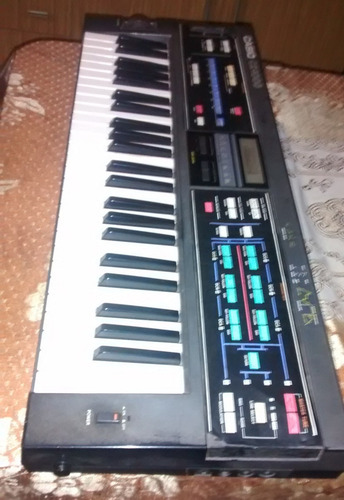

Unless you've already accessed this Mode since you switched the instrument on. When you've done this, the LCD should be showing: This is achieved by pushing the two buttons marked Solo (in the Mono area of the Programmer section) and MIDI, in either order. All that's required is to put the CZ into Mono Mode.

Now, the Casio synths don't implement Omni Mode, so we don't need to worry about this. But if you're the proud owner of a sequencer made by another manufacturer, then the information you need may well be harder to come by.īefore tackling the channel assignment on the sequencer you're using, you need to put the CZ into the correct Mode - Mode 4. If you're using the SZ1 sequencer, Casio provide you with all the details you need to get the most out of the combination. And at Casio's end of the market, they're still the only people getting to grips with it. They've continued this tradition on the Prophet 2000/2002 samplers, with 16 different sounds (the theoretical limit of one MIDI In Socket) all now available simultaneously.įinally, one of the many innovative aspects of the Oberheim Xpander and Matrix 12 synths was their ability to act as six (or 12) individual voices, using the various different methods of synthesis available independently on each.īut multi-timbrality is still the exception, not the rule. That instrument was the Rhodes Chroma, and its multi-timbral capability was only available if you used the Chroma-to-Apple II interface.Ī year later, Sequential made this facility a prime feature of their Traks system synths, with the entire family of SixTrak, Max and MultiTrak offering it as standard. Suprisingly few synthesisers offer this facility, even though it's now over three years since the first machine to offer this capability appeared. This is referred to as 'multi-timbral' operation. So, when a CZ synth is switched to Mode 4, you can happily use a MIDI sequencer to get four (or eight, with the 30) monophonic lines running each with its separate sound program. MIDI Mode 4 is defined as 'Mono on, Omni off' - the situation I've just described. In Mono Mode, the synthesiser assigns different voices to different MIDI channels and, provided Omni is switched off, actually divides all the machine's voice channels into separate instruments. Omni Mode only affects the receive status of the instrument in question, and causes it to 'look at' all 16 MIDI channels at once. A synthesiser in Poly Mode transmits and receives MIDI data on only one of the 16 available channels, unless Omni Mode is also switched on (in which case it'll bravely try to play all incoming data). In the 1.0 MIDI spec, the four possible Modes are referred to in two different ways: very simply, as Modes 1, 2, 3 and 4, and then more expansively, as combinations of Omni, Poly and Mono Modes.Īs the Poly configuration is not used in Mode 4, we'll get that over with first. Because the SZ1 sneakily accesses the CZs in MIDI Mode 4 without telling you too much about what's going on, you may well have been happily making the most of Mono Mode without even having heard of it.įirst, let's take a brief look at the various MIDI Modes available. The Casio CZ101 and its big brother, the CZ1000: different-size keyboards but exactly the same innards.Īs the owner of a Casio CZ synthesiser, you rushed out and bought the SZ1 sequencer as soon as it was available, then you'll already have been able to benefit from the multi-timbral capability of your synth.


 0 kommentar(er)
0 kommentar(er)
